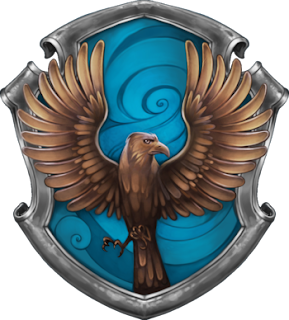Sharing J.K. Rowling’s birthday is her iconic protagonist of her bestselling series, the eponymous Harry Potter. In the series, Harry is born on July 31st, 1980. A lot of major events in the fictional, fantasy world happens around “The Boy-Who-Lived” and his birthday, including Harry being invited to attend the magical school Hogwarts, and a prophecy foretelling that a ‘chosen one’ born on this day (July 31st) can vanquish the evil antagonist of the series, Lord Voldemort.
During the beginning of each school year at Hogwarts School of Witchcraft and Wizardry, a ceremony is held in which the new students to Hogwarts are ‘sorted’ into one of four houses: Gryffindor, Ravenclaw, Slytherin, or Hufflepuff. The ceremony involves placing a magical, talking hat on top of the new witch’s or wizard’s head, and the hat decides which house best fits the student’s personality and values.
In honor of J.K. Rowling and Harry Potter’s shared ‘special day,’ a list has been compiled that shares what non-fiction, Muggle (meaning “non-magical” human) books the members of the four, separate, Hogwarts houses are most likely to read.
Want to find out which house you are in? Here is the link to the official J.K. Rowling website, Pottermore, which has an official sorting hat quiz that can be taken after signing up! All the House graphics are also from this website: https://www.pottermore.com/
Ravenclaw
"Or yet in wise old Ravenclaw,
If you've a ready mind,
Where those of wit and learning,
Will always find their kind."
—From the Sorting Hat ceremony, Harry Potter and the Sorcerer’s Stone
Ravenclaws value intelligence, insight, wisdom, wit,
creativity, and individuality, with the Ravenclaw symbol being an eagle, its colors
bronze and blue, colors associated with the element of air and “higher
thinking”. Ravenclaws place such value on the power of the mind that, to enter
their common room, an answer to the portrait’s riddle guarding the common
room’s entrance must be given. The communal Ravenclaw values of learning,
quiet, and the solitude of the mind would have Ravenclaws reaching for these
Muggle books to study up on!
Gryffindor
"You might belong in Gryffindor,
Where dwell the brave at heart,
Their daring, nerve, and chivalry
Set Gryffindors apart"
—From the Sorting Hat ceremony, Harry Potter and the Sorcerer’s Stone
Gryffindors tend to find following these ideals the most
important in their lives: being brave, loyal, courageous, adventurous, daring,
chivalrous, doing “the right thing at the right time,” and having nerve. The
symbol of Gryffindor House is a lion, with the colors scarlet and gold being
associated with the house as well. Gryffindors are passionate in their beliefs,
and will always stand up for what is right and will defend those who cannot
defend themselves. Gryffindors get a ‘bad wrap’ for being too heroic or brash
at times, but are always steadfast in their actions and beliefs. Here are some
“real-world” picks that a Gryffindor might find interesting to read, based on
the core beliefs and values of Gryffindor House:
Slytherin
"Or perhaps in Slytherin,
You'll make your real friends,
Those cunning folk use any means,
To achieve their ends."
—From the Sorting Hat ceremony, Harry Potter and the Sorcerer’s Stone
The Slytherin House is a Hogwarts house that
receives a lot of bad feedback, due to the number of dark witches and wizards
that have belonged to and graduated from the house throughout the years. Lord
Voldemort—the main antagonist in the series—was a member of Slytherin, and was
proud to call himself the true ‘heir of Salazar Slytherin.’ The symbol of
Slytherin is a snake, and their colors are green and silver. If you belong to
Slytherin, do not feel as if you are being labeled “evil”! Amongst other
things—such as the tendency for Slytherins to be opportunistic and selfish—Slytherins
are also resourceful, cunning, clever, and determined. Just as some Slytherins
will do almost anything for power and ambition, the majority of this
Muggle-read list includes how to gain influence, and what it means to wield
‘good’ or ‘bad’ power:
Hufflepuff
"You might belong in Hufflepuff,
Where they are just and loyal,
Those patient Hufflepuffs are true,
And unafraid of toil."
—From the Sorting Hat ceremony, Harry Potter and the Sorcerer’s Stone
The house that receives the most criticism for its
seemingly ‘indistinct’ features—other than an abundance of kindness and
acceptance—the Hufflepuff house is for students who value comfort, kindness,
and good relationships with other people. While Gryffindors value challenges
(and, at times, battle), Slytherins value power, and Ravenclaws value
intelligent, Hufflepuffs value, more than anything else, goodness, genuineness,
generosity, with most Hufflepuff members also placing an importance on the
value of nature and loving fellow creatures. While the Hufflepuff symbol is a
honey badger (an animal that, in the Muggle world, is noted by naturalists for
its confrontational nature and anger), Hufflepuff values could not be any more
opposite. Hufflepuffs are almost all-around positive, with the only critique of
Hufflepuffs being that they can sometimes be “too kind.” Hufflepuffs value
home, comfort, food, and kindness; the following Muggle books might pique a
Hufflepuff’s interest!






No comments:
Post a Comment